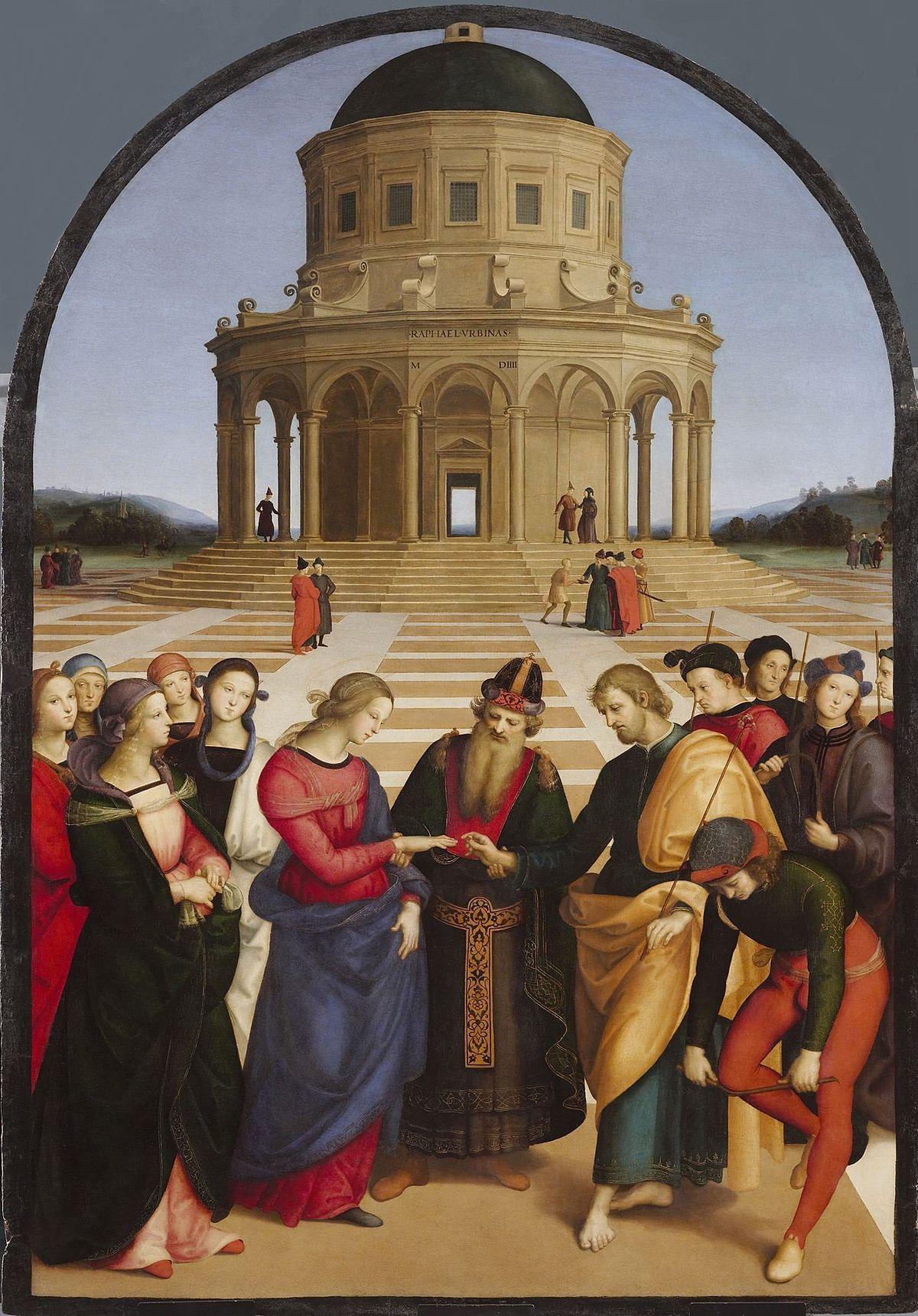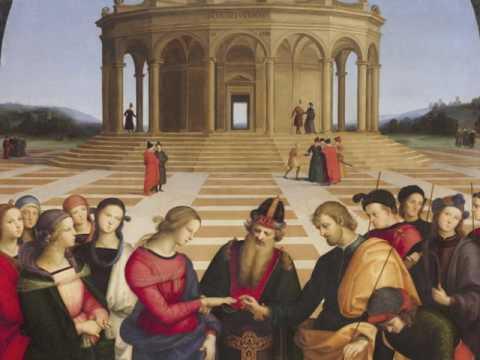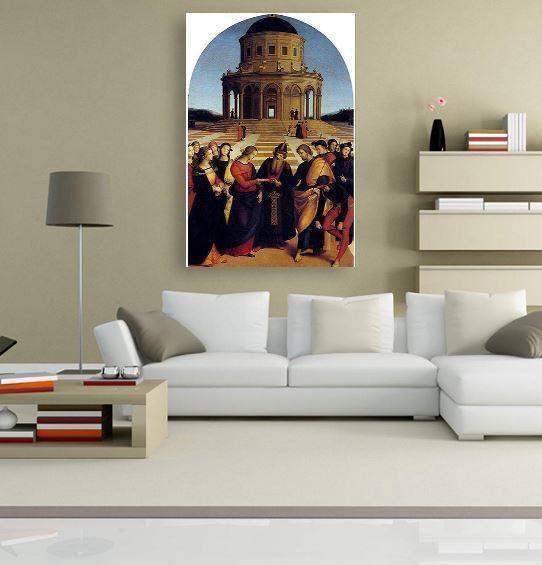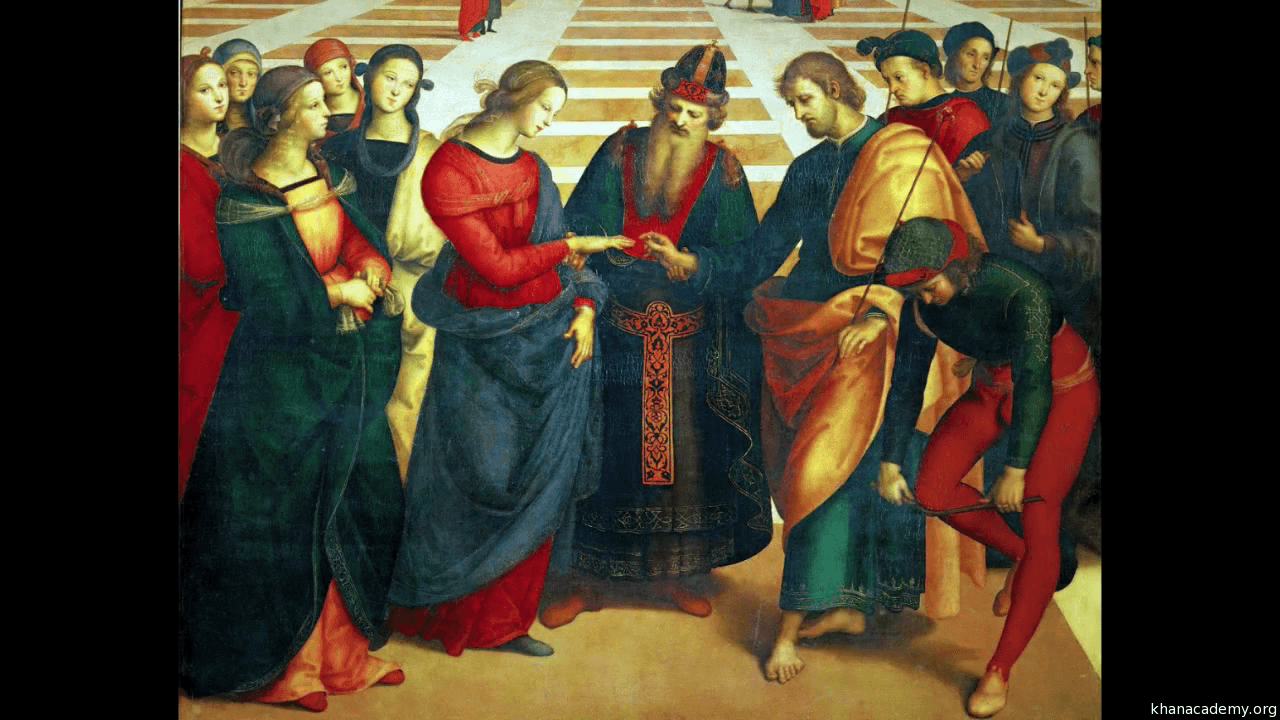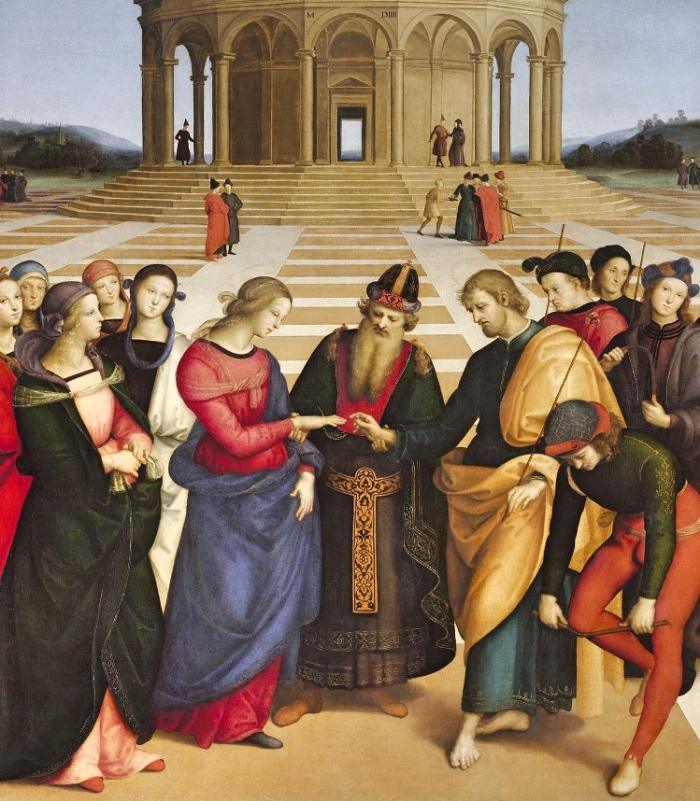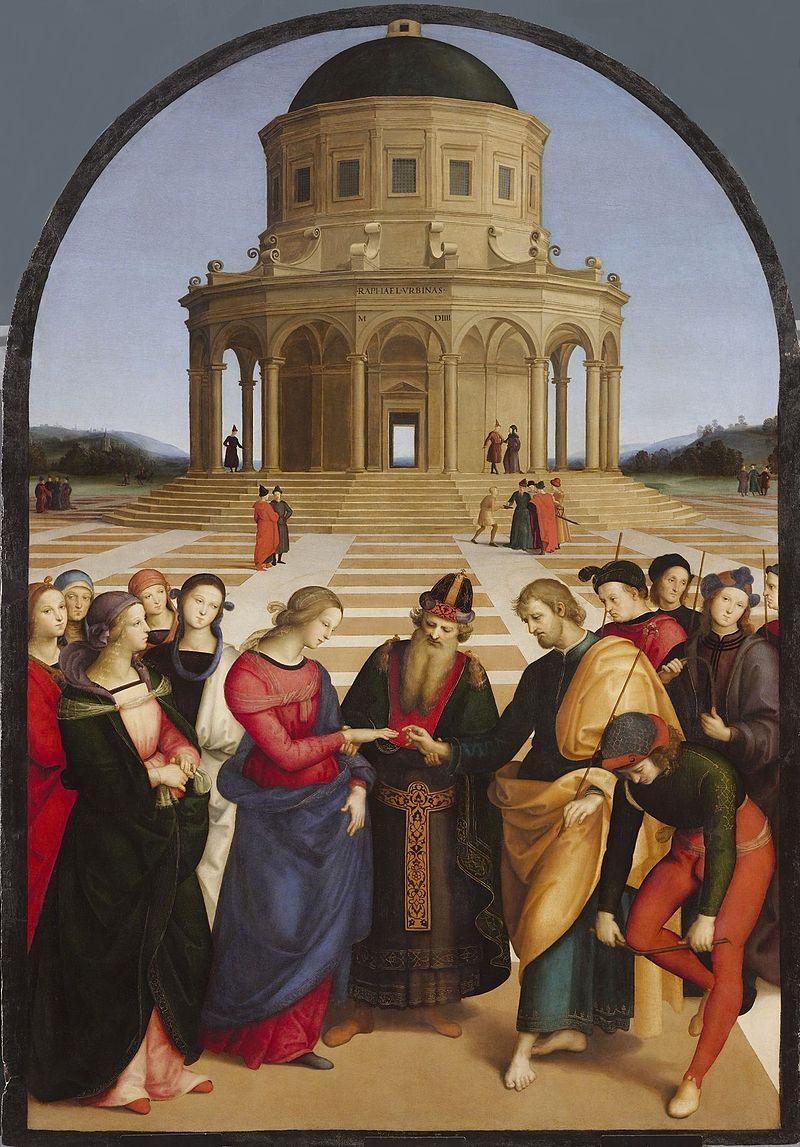Description
What is the meaning of The Marriage of the Virgin by Raphael and why is it important to know it?
This painting marks the final part of Raphael's early period and the beginning of his artistic maturity.
In this painting, Raphael displays his mastery of perspective, as the painting is dominated by a distinctly Italian Renaissance (as opposed to Roman-occupied Palestinian) round temple in the background, on whose frieze the painter has cleverly painted his name and , below, the date. The front and rear gates of this temple are open, and through them the viewer can see a bit of the hazy, sfumato-painted background of the hills and sky. The temple sits on a cascade of steps leading to a plaza with walkways cut into a brownstone. People dressed in Renaissance garb gather in small groups, seemingly oblivious to the momentous marriage taking place in the foreground.
Critics believe the painting is inspired by two compositions by Perugino: the famous Christ Handing the Keys to Saint Peter from the fresco cycle in the Sistine Chapel and a panel containing the Marriage of the Virgin now in the Museum of Caën.
Raphael painted the Marriage of the Virgin taking into account the altarpiece with the same theme by Perugino, which is preserved in the Musée des Beaux-Arts de Caen. Raphael was inspired by him, using his compositional structure and iconography to obtain a result of incredible and unattainable perfection.
Infrared reflectography reveals a dense array of lines that converge at the temple gate. These lines define the perspective system of the image, fully following the recommendations contained in De prospective pingendi (On the Perspective of Painting) by Piero della Francesca. Thanks to this artifice, the temple becomes the visual center of the composition. The figures are arranged in a semicircle and their position balances the convex line of the architecture, which has been painted with such precision that scholars have speculated on the existence of a wooden model.
All the elements are connected to each other by mathematical relations of proportion and placed according to a clear and logical hierarchical order, whereas Perugino had only juxtaposed the elements of composition within a correct perspective structure. The realization of this coherent organism perfectly demonstrates Raphael's vision. He intended beauty as an abstract order of geometric representation and thought that artists had a duty "to do things not as nature does, but as it should."
The marriage of the Virgin clearly shows the marriage of Saint Joseph and the Virgin Mary. The painting was commissioned by the Church of Citta di Castello in Italy. The painting is superb in its use of imagery, bright colors and powerful scope.
As a Renaissance artist, Rapheal was able to render perspective beautifully, and this is clearly evident in The Marriage of the Virgin. In the background of the painting, we can see the Italian temple that is round and imposing.
Doors have been painted on the walls of the temple, and it is clear that the temple is open. Through one of the open doors we can catch a glimpse of the bright blue sky and luscious hills below. The temple has been painted on top of the canvas.
Towards the center of the canvas is the red stone plaza, and it is from this plaza that Raphael has painted a series of steps leading up to the temple. Around the square several people dressed in typical Renaissance clothes move, and it is funny to note that they are unaware of the meaning of the marriage that is being celebrated.
The foreground is dominated by the wedding party and we see the priest holding the hands of the bride and groom, preparing to place the wedding ring.
Behind the Virgin Mary is a group of women, perhaps her relatives, although their identity is unknown. We also see a little girl on the left of the image wearing a red dress.
She is looking directly at the observer. San José also has a group of men after him, and their identities are again unknown. What is quite captivating is that all the men carry rods, but only Joseph's rod has broken and blossomed with flowers.
The Virgin Mary is wearing a red dress, so perhaps the girl is also wearing red. Her hair is adorned with a thin veil and she also wears a vibrant blue cape. Joseph appears to be wearing a simple cassock, with an elaborate cape draped around his shoulders.
The Wedding of the Virgin marks the final part of the early artistic period of Raphael, who painted this work at the age of 21 and was inspired by a famous painting by Perugino, almost copying its composition, but producing ingenious solutions that make his interest in the rigor. awakens the perspective and the study of ancient models.
Raphael brought a breath of fresh air to western painting: the spontaneity of the figures, also characteristic of The Wedding of the Virgin, where the characters have natural movement and are immersed in a luminous space.
Other names:
The Marriage of the Virgin, The Marriage of the Virgin, The Commitment of the Virgin

